You should be aware of wild edibles in 2023 and don’t confuse them with anything else growing in the wilderness. To get precious life-saving calories, you can turn to foraging flowers, roots, nuts, wild asparagus, acorns, berries, weed, fruit, and vegetables. Ever heard of eating dandelions or cover flowers? Read our article and you will discover the most common wild edibles that can fit your taste. Read carefully: some wild plants are poisonous.
You never know what information you will need in the future, finding yourself in a particular survival situation. For example, how do you plan to survive in the wild? In this case, plant identification skills and knowing what is edible are a MUST.
View this Pin to get acquainted with wild edibles you may use as foods not only in emergencies but daily.
The 13 Best Wild Edible Plants
1) Edible Clover
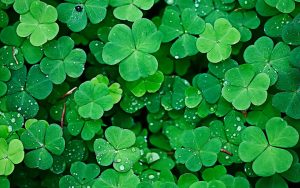
This is one of the common wild edibles which can be easily met in the USA. It is full of proteins and very useful in making different products. Here are some tips for extracting the best health benefits from this species.
First of all, to avoid any problems with the raw plants’ digestion, you can squeeze out the juice from them.
Second, you can make flour from the dried flowers and their seed pods.
Third, once you steeped the plants in the water, you can get yourself tea.
2) Edible Cattails
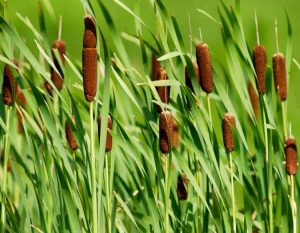
Thanks to nature, it is possible to make pancakes by mixing cattail pollen with flour and eggs. To gather the pollen, you should comb through the upper parts of these wild edible plants for yellow grains at the end of June or the beginning of July.
3) Edible Berries
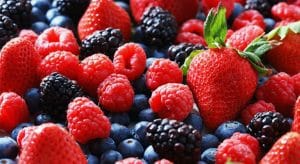
As for berries of dark color, almost all of them are safe and healthy for nutrition because they have Vitamin C and enough fiber. However, red, yellow, and white berries are wild edibles that are very risky for humans. Never eat them, especially when being in survival situations, if you are not good at identifying wild plants.
Grapes are also edible plants. Their leaves can be dried for some days and then boiled for about twenty minutes in an open pot to heat them up with or even without a wrapped meat slice. These wild edibles are enriched with vitamins and fiber as well.
4) Edible Dandelions
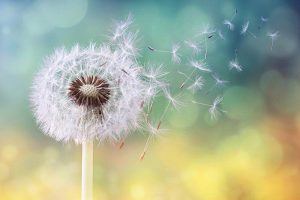
Thanks to the book I’ve recently read, I learned one good pesto recipe you can use dandelions for. You just need to boil young plants, freeze them all for a while, and then add vinegar, olive oil, some oregano, and pepper. I want you to pin this recipe because I bet you definitely will need it when go foraging wild edibles and cooking some food.
5) Acorns
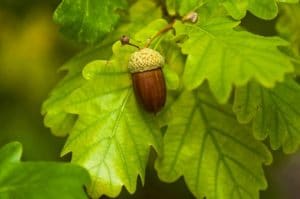
6) Wild Asparagus
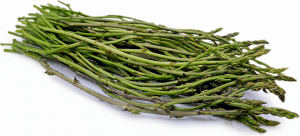
Asparagus stalks sometimes differ from each other. Those you can buy at the supermarket have thicker stalks than the ones of the wild plants. But the latter is remarkable because they can grow back after you cut them lower to the ground.
You can either boil or steam wild asparagus or eat it in raw form when turning out to be in the wilderness.
7) Edible Bamboo
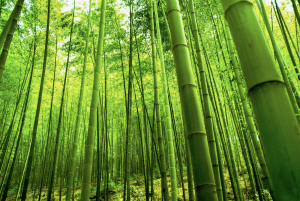
Plus, these weeds are a good source of such nutrients as proteins, fiber, and potassium.
To try bamboo, you should complete some preparation stages. First, cut younger shoots when they are less than a foot high. Second, remove all the outer leaves and tough shoots components. Third, slice them into small parts and boil uncovered for more than twenty minutes to get a less bitter taste.
8) Milk Thistle
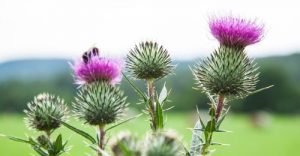
It is better to peel the spines off the leaves and eat them with other foods. One can also boil stalks and roots or even bake something from the resulting flour.
9) Edible Violets
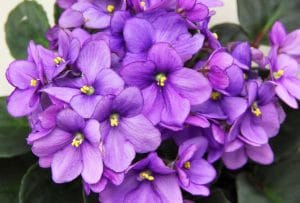
Their leaves are nutritious and suitable for eating unprepared or boiled, but they are also a good basis for making tea from them. Heck, such tea can even cure a headache if you take a towel, soak it in this wonderful liquid, and put it on the backside of one’s neck.
Despite the hundreds of useful qualities of these edible plants, two things you should beware of are their roots and African Violets.
10) Wild Onions
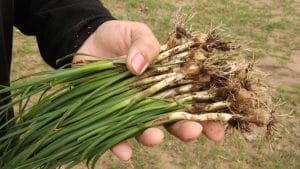
Wild onions usually grow on moist and poor soil. Once you find a real onion, you can eat it entirely, either in a raw form or you can use it in foods.
11) Purslane
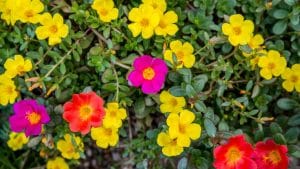
Purslane weeds are excellent for food since there are a lot of Omega-3 and beta-carotene nutrients inside. Like any other edible plants in this pin, they can be eaten unprepared or cooked.
You can find dishes containing purslane and prepared according to the best recipes in the restaurants.
12) Edible Day-lily
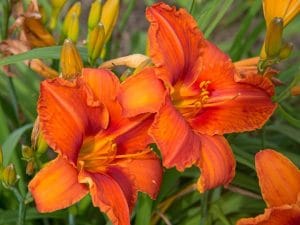
Once you decided to try these flowers, you should cut the leaves at around 5 inches. Remember that if you damage the stalks, it won’t be possible to grow back and be used again. Then you can have stir fry or saute the leaves.
You can eat the buds untreated, boiled, or stir-fried, as well as daylily roots or the whole flowers. It is better to cook them in late autumn as they should get enough vitamins and healthy minerals.
13) Wild Lettuce

This plant is definitely worth foraging, so if you find it, never miss it!
Always Be Careful
Every time you are going to eat something in the wild, check yourself multiple times, and think wisely. You might not be good at plant identification and make a mistake, which can cause you problems with health and even kill you.
I suggest you make a small bite of the plant first and observe your body reactions. You can try some other safe experiments to make sure you are not poisoned.
Remember that the plants located near cities or roadways may be regularly sprayed with different chemicals and unsafe for nutrition. Especially cyanide has a smell similar to almonds, so keep this in mind to avoid heavy poisoning and death.
Flip through our extensive survival preparation guide and get ready for totally anything! Find a lot of relevant info about homestead or wilderness survival situations, the best survival gear out there, together with the essential survival skills a real prepper, homesteader, and survivalist must have and increase — all on our website!
FAQ
What wild foods are edible?
The easiest to get wild food are plants that sometimes people do not identify as edible. On this page, we covered thirteen basic wild edible plants so that you could forage safely. To summarize, they are different berries, including grapes, weeds such as wild asparagus, purslane, milk thistle, and cattails, and, of course, amazing flowers – violets, day-lilies, clovers, etc.
What can you eat to survive in the wild?
To survive in the wild, you definitely need to know different species of plants because they can save your life if you can understand what is edible. Our article presents useful information on what you can use as food in survival situations – it is a particular type of flower, berries, weeds, and acorns.
How do you safely forage?
To forage safely, it is necessary to have enough knowledge about different plant species: how they look like, what qualities they have, and which of them are unsafe. Keep also in mind that you can never know something for sure in the wilderness.
How do you know if a plant is edible?
There are some widespread wild edible plants that everyone should know about – clovers, cattails, onion, bamboo, etc. All of them have their own distinctive features. To check what plant you see, check for its size, smell, color, and location. Plus, never eat plants near civilization as they may be in chemicals.


